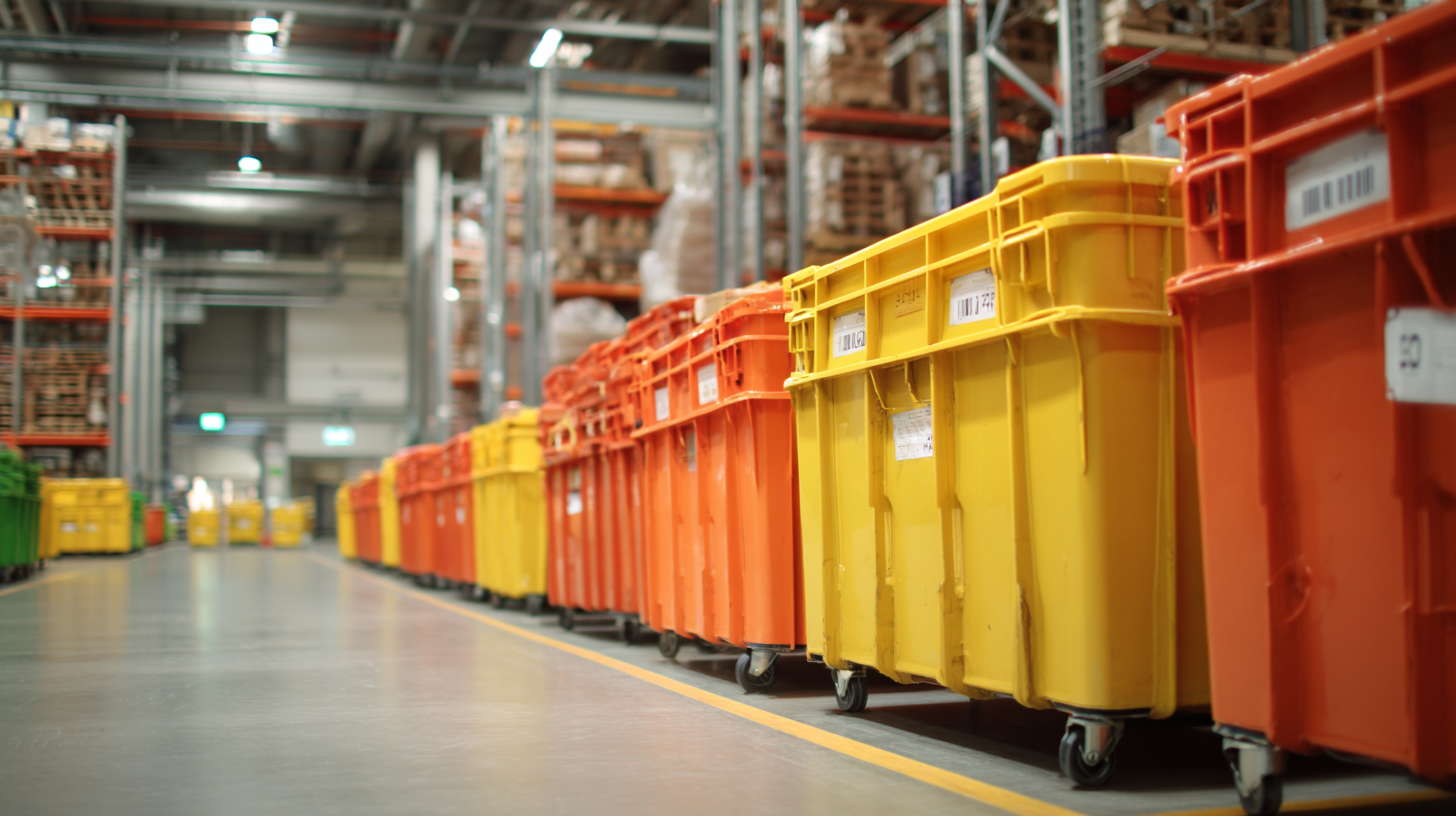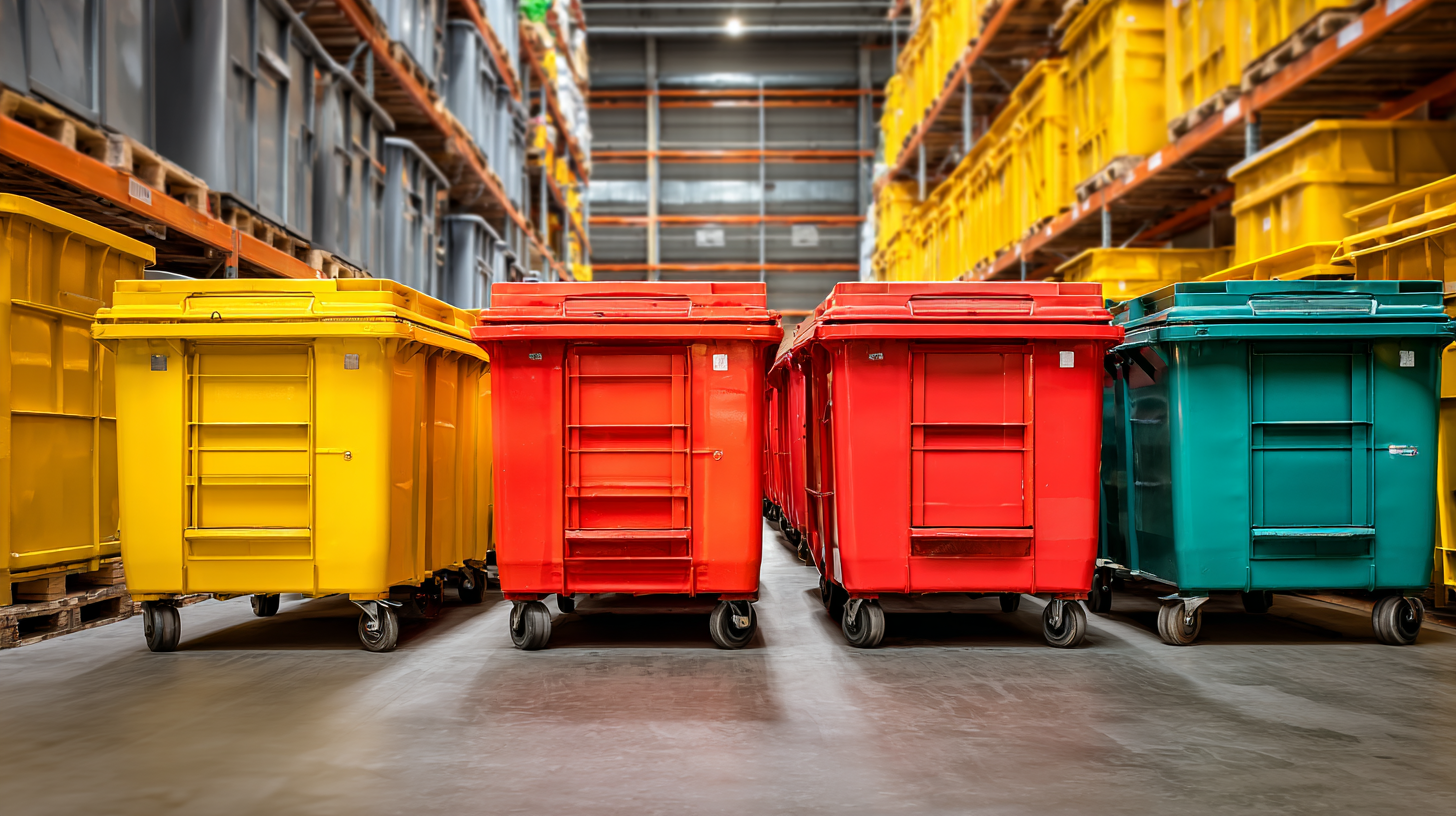Welcome to this website!

In the ever-evolving landscape of supply chain management, the selection of the right Bin Container is pivotal for optimizing efficiency and reducing operational costs. As reported by the Council of Supply Chain Management Professionals (CSCMP), effective supply chain practices can lead to a reduction of inventory costs by up to 25%. Moreover, with China's manufacturing sector experiencing a significant quality upgrade, driven by technological advancements and stringent quality controls, the demand for high-quality Bin Containers capable of facilitating seamless logistics has surged globally. According to a recent market analysis by Grand View Research, the global bin container market is expected to reach USD 20.2 billion by 2025, highlighting the growing recognition of these containers as essential tools in streamlining supply chain processes. Choosing the correct Bin Container not only impacts storage efficiency but is also integral to enhancing the overall productivity and competitiveness of businesses in a global market increasingly focused on quality and innovation.

Selecting the right bin container is crucial for enhancing supply chain efficiency. When the appropriate containers are used, they not only ensure the safe storage and transport of products but also streamline operations within warehouses and distribution centers. A well-designed bin container can reduce handling time, minimize product damage, and improve inventory management by allowing for better organization and accessibility. The right choice can transform a cluttered workspace into a well-oiled logistical operation, leading to increased productivity.
Moreover, the effectiveness of a supply chain hinges on the ability to adapt to changing demands and circumstances. Choosing containers that are flexible and customizable can provide companies with the agility needed to respond to fluctuating customer needs. Lightweight materials and modular designs support efficient movement, while appropriately sized bins help optimize space utilization. Ultimately, investing time and resources into selecting the right bin container translates to significant cost savings and improved service levels, reinforcing the importance of this decision in overall supply chain management.

When selecting the best bin container for efficient supply chain management, it's essential to identify key product characteristics that align with your operational needs. According to a 2022 report by Supply Chain Digest, companies can improve their logistics efficiency by up to 30% through optimal container choices. Key characteristics to consider include material durability, weight capacity, and design flexibility. For instance, using lightweight yet durable materials can lead to reduced shipping costs and increased load capacities.
**Tip:** Always evaluate the material of the bin containers. High-density polyethylene (HDPE) is often recommended for its strength and resistance to environmental factors, ensuring long-lasting usage in various conditions.
Another critical factor is the size and shape of the bin. A well-designed container should maximize space utilization within your storage and transit processes. The same report highlights that companies minimizing wasted space in their shipment can save as much as 15% on transportation costs. Employing modular bins can also facilitate easier stacking and storage.
**Tip:** Consider using bins with standardized dimensions to simplify handling and integration with existing storage systems. This practice not only enhances efficiency but also streamlines inventory management processes, further optimizing your supply chain.
When selecting the best bin container for efficient supply chain management, understanding the various materials available is crucial, especially regarding their impact on product preservation. Common bin materials include plastic, metal, and cardboard, each offering unique advantages and disadvantages.
Plastic bins are lightweight, durable, and resistant to moisture, making them ideal for perishable goods that require a controlled environment. Conversely, metal bins, while heavier and potentially rust-prone, provide superior strength and longevity, making them suitable for bulk items or heavy equipment.
Cardboard bins, although less durable than their plastic or metal counterparts, are often favored for their cost-effectiveness and recyclable qualities. They excel in dry storage settings and are ideal for lightweight items or single-use applications. However, their susceptibility to moisture and physical strain limits their use in scenarios requiring extensive handling.
Overall, choosing the right bin container material hinges on understanding the specific requirements of the products being stored, including factors like temperature sensitivity, weight, and potential exposure to elements, ultimately influencing preservation efficacy throughout the supply chain.
In today's ever-evolving business landscape, efficient supply chain management is crucial for organizations aiming to optimize their operations. One critical aspect of this is selecting the right bin container suited to various industry needs. Case studies across different sectors reveal that successful implementations of bin containers have significantly streamlined logistics, improved inventory accuracy, and enhanced overall workflow. For instance, a retail company that adopted customized bin solutions reported a drastic reduction in product retrieval times, thereby elevating customer satisfaction.
Moreover, organizations leveraging intelligent bin container systems are experiencing transformative gains. By employing data-driven strategies, companies can monitor inventory levels in real-time, allowing for timely replenishment and minimizing stockouts. In the automotive industry, one particular case demonstrated how a manufacturer utilized specialized bins to manage components more effectively, leading to reduced waste and lower operating costs. These real-life examples underscore the importance of selecting a bin container that not only meets the physical storage requirements but also integrates seamlessly with technology to foster operational excellence.

As the supply chain landscape evolves, bin container design is increasingly becoming a focal point for efficiency and sustainability. According to a report by the Global Supply Chain Institute, innovative bin container systems can reduce handling costs by up to 15% and improve inventory accuracy by approximately 25%. This shift reflects growing industry recognition that well-designed containers not only save space but also enhance the speed and accuracy of logistics operations.
In recent years, emerging trends such as automation and data analytics have influenced bin container development. Containers equipped with RFID technology facilitate real-time tracking, enabling companies to optimize their inventory management further. Research from the Industrial Transportation Association indicates that organizations employing smart bin containers can streamline their operations, leading to a potential reduction in lead times by 30%. As sustainability becomes a priority, the incorporation of eco-friendly materials in bin container design is anticipated to not only meet regulatory mandates but also resonate with eco-conscious consumers, ultimately bolstering brand loyalty.
| Bin Type | Material | Capacity (Liters) | Best Use Case | Future Trends |
|---|---|---|---|---|
| Stackable Bins | Plastic | 30 | E-commerce Fulfillment | Automation Compatibility |
| Tote Bins | Metal | 50 | Wholesale Distribution | Smart Technology Integration |
| Conductive Bins | Polyethylene | 20 | Electronics Manufacturing | Sustainability Focus |
| Collapsible Bins | Plastic | 100 | Seasonal Retail | IoT Tracking |
| Food Safe Bins | Polypropylene | 40 | Food Service Industry | Enhanced Hygiene Standards |
